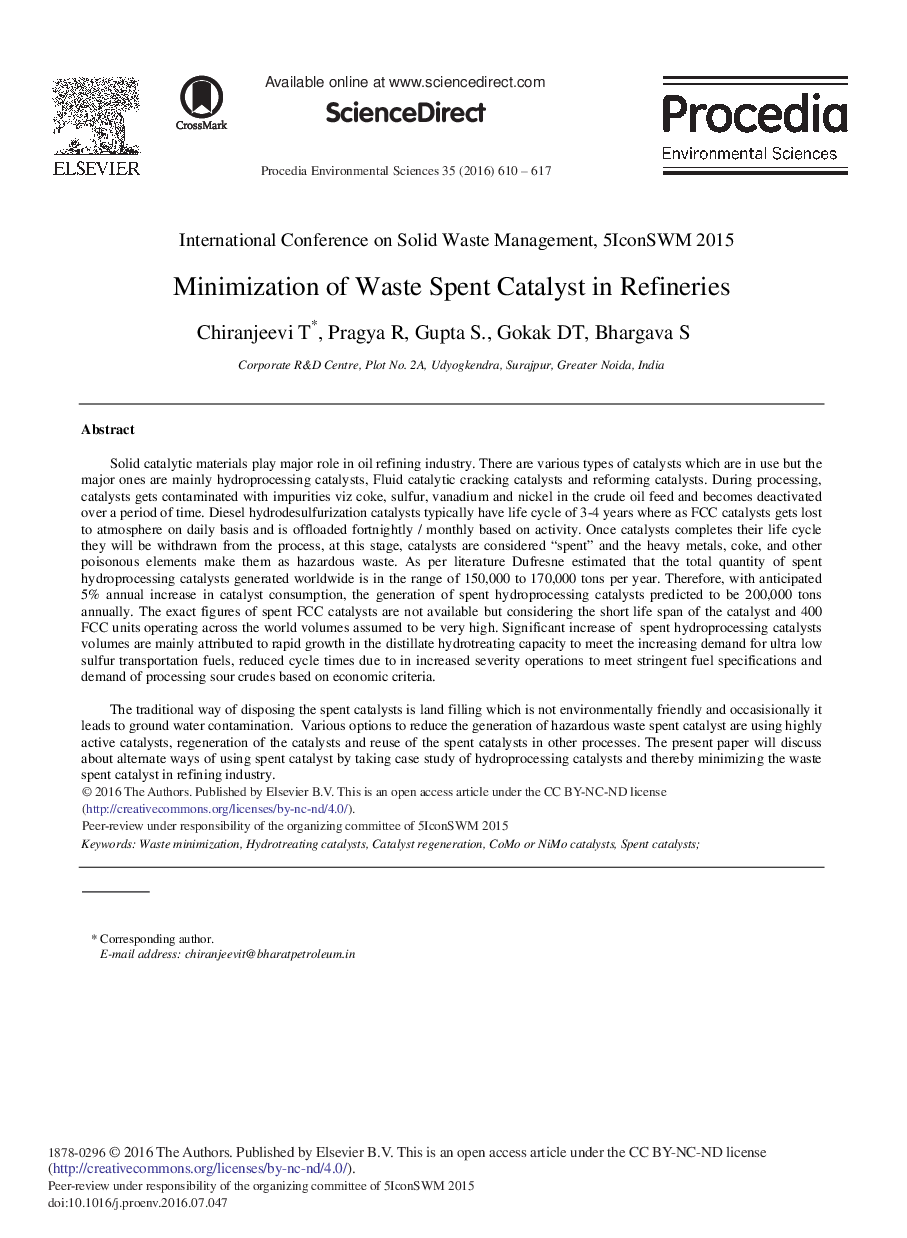| کد مقاله | کد نشریه | سال انتشار | مقاله انگلیسی | نسخه تمام متن |
|---|---|---|---|---|
| 4401414 | 1618609 | 2016 | 8 صفحه PDF | دانلود رایگان |
Solid catalytic materials play major role in oil refining industry. There are various types of catalysts which are in use but the major ones are mainly hydroprocessing catalysts, Fluid catalytic cracking catalysts and reforming catalysts. During processing, catalysts gets contaminated with impurities viz coke, sulfur, vanadium and nickel in the crude oil feed and becomes deactivated over a period of time. Diesel hydrodesulfurization catalysts typically have life cycle of 3-4 years where as FCC catalysts gets lost to atmosphere on daily basis and is offloaded fortnightly / monthly based on activity. Once catalysts completes their life cycle they will be withdrawn from the process, at this stage, catalysts are considered “spent” and the heavy metals, coke, and other poisonous elements make them as hazardous waste. As per literature Dufresne estimated that the total quantity of spent hydroprocessing catalysts generated worldwide is in the range of 150,000 to 170,000 tons per year. Therefore, with anticipated 5% annual increase in catalyst consumption, the generation of spent hydroprocessing catalysts predicted to be 200,000 tons annually. The exact figures of spent FCC catalysts are not available but considering the short life span of the catalyst and 400 FCC units operating across the world volumes assumed to be very high. Significant increase of spent hydroprocessing catalysts volumes are mainly attributed to rapid growth in the distillate hydrotreating capacity to meet the increasing demand for ultra low sulfur transportation fuels, reduced cycle times due to in increased severity operations to meet stringent fuel specifications and demand of processing sour crudes based on economic criteria.The traditional way of disposing the spent catalysts is land filling which is not environmentally friendly and occasisionally it leads to ground water contamination. Various options to reduce the generation of hazardous waste spent catalyst are using highly active catalysts, regeneration of the catalysts and reuse of the spent catalysts in other processes. The present paper will discuss about alternate ways of using spent catalyst by taking case study of hydroprocessing catalysts and thereby minimizing the waste spent catalyst in refining industry.
Journal: Procedia Environmental Sciences - Volume 35, 2016, Pages 610–617
